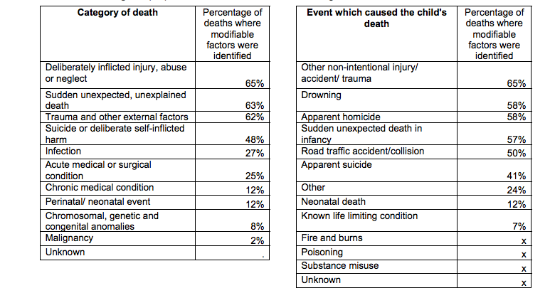How many child deaths are avoidable?
"Around two-thirds of child deaths caused by abuse could have been avoided last year, campaigners have warned as they accused the Government of failing to protect the rights of children."
The Daily Star, January 21, 2012
Out of 43 children who died in England in 2011-2012 as a result of "deliberately inflicted injury, abuse or neglect," over half could have been saved, a report by the Children's Rights Alliance for England (CRAE) has found.
The report stated that 28 child deaths were deemed to have "modifiable factors."
Join 72,953 people who trust us to check the facts
Sign up to get weekly updates on politics, immigration, health and more.
Subscribe to weekly email newsletters from Full Fact for updates on politics, immigration, health and more. Our fact checks are free to read but not to produce, so you will also get occasional emails about fundraising and other ways you can help. You can unsubscribe at any time. For more information about how we use your data see our Privacy Policy.
But what does "modifiable" mean in this context? Let's first look at the source for this figure.
The data reported by CRAE is from a July 2012 Department for Education Statistical Release on Child Death Reviews. Between 1 April 2011 and 31 March 2012, the Local Safeguarding Children Boards in England reviewed the deaths of all children excluding stillborn babies, from birth up to 18 years, who resided within their area. This is known as the Child Death Review Process. The child death overview panels analysed 4,012 child deaths and found that 784 of these had "modifiable factors" (20%). The category of death which had the largest proportion (65%) of cases identified as preventable were those due to "deliberately inflicted injury, abuse or neglect." The table below illustrates this, and other types of deaths which have been deemed "preventable or potentially preventable".